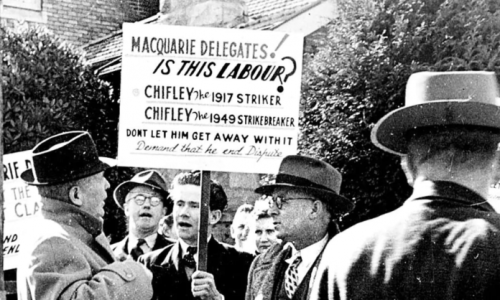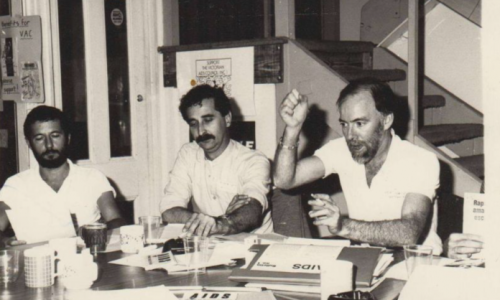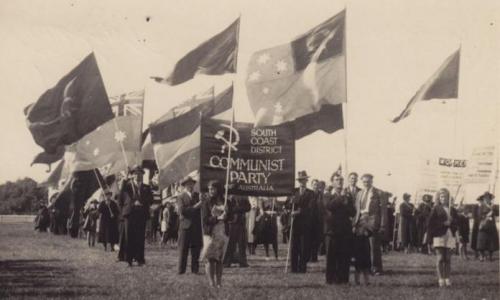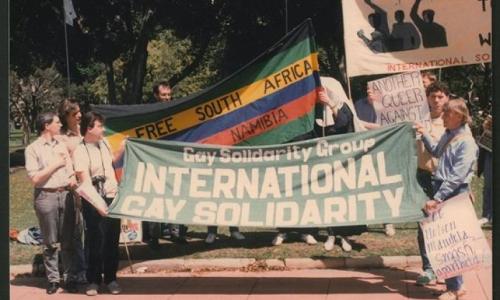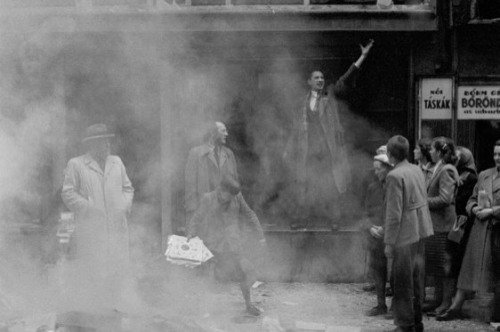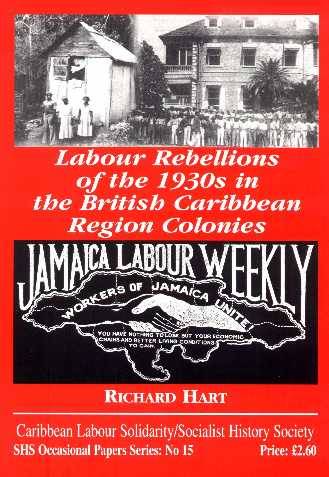#working class history
“If the order is given to fire, don’t let me see any rifle pointed in the air; fire low and lay them out”, Lieutenant-Colonel Tom Price told his troops the day before confronting striking maritime workers in 1890. While no-one was shot, the action against workers continued a tradition of using troops to put down Indigenous and convict resistance and unrest in colonial Australia.
Fast forward to last month, when Prime Minister Scott Morrison refused to rule out the use of the armed forces on the wharves against workers who, he said, were “holding the country to ransom” with “straight-out extortion”. Striking workers in Australia have often been threatened with military force.
Troops were first used at the Lambton Colliery in the Hunter Valley in 1888, but their most notorious use was in the deep recession several years later, when the military was used against striking waterfront workers and shearers.
READ MORE: Using soldiers to smash strikes
Post link
The 1970s promised so much—gay liberation had broken through homophobic hate, and life for LGBTI people was being transformed. As the 1980s arrived, so too did homosexual law reform, anti-discrimination laws, gay media and a thriving gay culture. But then came a mysterious disease that seemed to target gay men, its cause and mode of transmission unknown. Suddenly, gay sexuality was stigmatised all over again, with panicky headlines referencing a “gay plague” or, in the case of Melbourne’s Truth newspaper, the overtly homophobic “Die, you deviate”. Talk of forced quarantining, compulsory testing and surveillance of gay men was everywhere.
In the US, President Ronald Reagan refused to utter the word AIDS in the first four years of the crisis, despite 60,000 being infected and 28,000 dying. As late as 1987, the US Congress banned the use of federal funds for AIDS prevention or for education that was in any way supportive of homosexuality. “Nobody left those years untouched”, wrote journalist David France, “not only the mass deaths—100,000 in New York alone—but also the foul truths that a microscopic virus had revealed about American culture: politicians who welcomed the plague as proof of God’s will, doctors who refused the victims medical care, ministers and often parents who withheld all but the barest shudder of grief”.
But LGBTI people were coming out of a period of activism and, despite the initial shock, were prepared publicly and defiantly to fight any attempt to take away what they had won.
READ MORE: Silence = death! Action = life! Activism in Australia’s AIDS crisis
Post link
For most of the twentieth century, left-wing politics in Australia was dominated by the Stalinist politics of the Communist Party of Australia (CPA) and its various offshoots. While never in a position to challenge the ALP as the leading force in the working-class movement, the CPA – which per head of population became the largest Communist party in the English-speaking world—built a powerful presence in the trade unions.
For decades, committed Communist activists played leading roles in innumerable workplace struggles and community campaigns. Consequently, the party built an influence that went well beyond the ranks of its formal membership.
It had enormous influence on the outlook of the Labor Party left. That influence was reflected in the fact that, when pro-Moscow loyalists split from the CPA in the early 1970s, the NSW Labor left split along similar lines. The party also had a powerful impact on intellectual, artistic and small-l liberal circles.
Though worker Communists played a positive role in many struggles, the overall impact of the CPA’s Stalinist politics on the workers’ movement was disastrous. The CPA’s championing of the murderous regimes in Russia, Eastern European and China as workers’ paradises discredited the very idea of socialism.
READ MORE: 100 years since the founding of Australia’s Communist Party
Post link
Ninety-eight years old and Ken Lovett hadn’t stopped! Ever the activist, while facing terminal cancer, Ken made sure he posted his voting papers for Victorian Socialists’ candidate Omar Hassan in the 2020 local council elections. He died just a few days later, politically committed to the end.
Ken lived through economic depression, world war, McCarthyism and then the hope of the late 1960s and early 1970s, when revolutionary struggles swept the world. This life experience made him a passionate campaigner in the fight against oppression.
Twenty-seven years ago, he met his dearly loved partner Mannie de Saxe, a committed socialist, anti-Zionist Jewish activist, a South African and fierce opponent of that country’s apartheid regime. Together, they campaigned for so many of these and other causes, for equal rights for all, including, more recently, many contributions to improve services for older lesbian, transgender and gay people.
We have all lost a committed fighter for our rights, but one who has enriched the struggle and helped give us the strength to keep on fighting.
READ MORE: Vale Ken Lovett
Post link
Erich Lessing’s photographs of the 1956 Hungarian revolution centre its participants and draw out their humanity. What he captured is real individuals participating in a mass, collective act of defiance.
You can read more about the Hungarian Revolution in the latest edition of the paper.
Post link
FREE BOOK!
Labour Rebellions of the 1930s in the British Caribbean Region Colonies
published jointly by Caribbean Labour Solidarity and the Socialist History Society. 2002. ISBN 0953774236
more FREE BOOKS from lascasbookshelf.tumblr.com
||| Contents |||
The British Caribbean Region Colonies
Populations and Class Structure
Franchise, Political Control and Labour Representation
Common Causes of Working Class Unrest
The Early Warnings
Sugar Workers Rebel in St Kitts in 1935
The Labour Rebellion in St Vincent
Unrest and Intimidation in St Lucia
The Labour Rebellion in Barbados
The Labour Rebellion in Trinidad & Tobago
The Labour Rebellion in Jamaica
The Labour Rebellion Renewed in Guyana
Islands Without Rebellions in the 1930s
The West India Royal Commission
Conclusion
Endnotes
Post link

